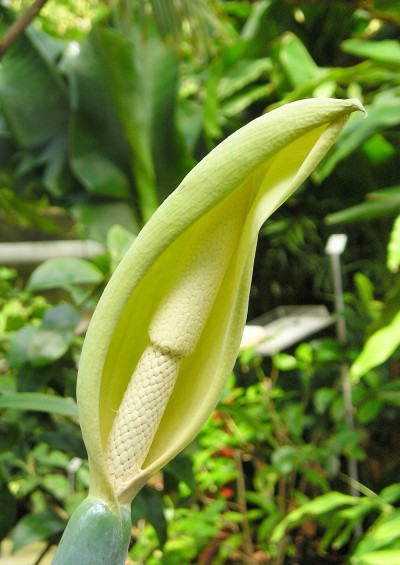






Do Alocasia elephant ears have seeds? They do reproduce through seed but it takes years before you will get the big beautiful leaves. Older plants in good conditions will produce a spathe and spadix that will eventually produce seed pods. Elephant ear flower seeds are only viable a short time, so if you want to plant them, harvest the pods and use them as soon as possible.
Alocasia odora is also known as elephant ear plant because of its colossally huge leaves and the general shape of the foliage. They are members of the Aroid family, which encompasses plants with some of the most attractive foliage available to gardeners. The glossy, heavily veined leaves are a standout and the main attraction, but occasionally you get lucky and the plant will bloom, producing unique dangling seed pods on elephant ear plant.
Elephant ear flower seeds are contained in a hard shelled pod. It takes months for the orange seeds to mature, during which time the pods hang from the plant. They are a rare sight in most gardens, but in warm climates, established plants may develop a spathe and spadix, which house the male and female flowers.
Once pollinated, they develop into fruits filled with many little seeds. The seed pods on elephant ear plant need to be cracked open to reveal the numerous seeds.
Once the Alocasia elephant ear has seed pods, remove them once the pod has dried and the seeds are mature. Germination is capricious and variable on these plants. Seeds should be removed from the pods and rinsed.
Use a humic rich medium with a generous amount of peat. Sow the seeds on the surface of the soil and then lightly dust them with a pinch of medium. Spray the top of the soil with a misting bottle and keep the medium lightly damp but not soggy.
Once seedlings appear, which may be as much as 90 days after planting, move the tray to a location with indirect but bright light.
Alocasia rarely produces a flower and subsequent seed pod. Their erratic germination means that even if your elephant ear has seed pods, you are better off starting plants from offsets. The plants send out side shoots at the base of the plant which work well for vegetative production.
Simply cut off the side growth and pot them up to establish and grow larger. Once the plant is a year old, transplant to an appropriate area of the garden and enjoy. They can also be grown in containers or indoors.
Don’t forget to bring the bulbs or plants indoors in any region where freezing temperatures are expected, as Alocasia plants are not at all winter hardy. Lift in-ground plants and clean off dirt, then store them in a box or paper bag until spring.
Copyright © www.100flowers.win Botanic Garden All Rights Reserved